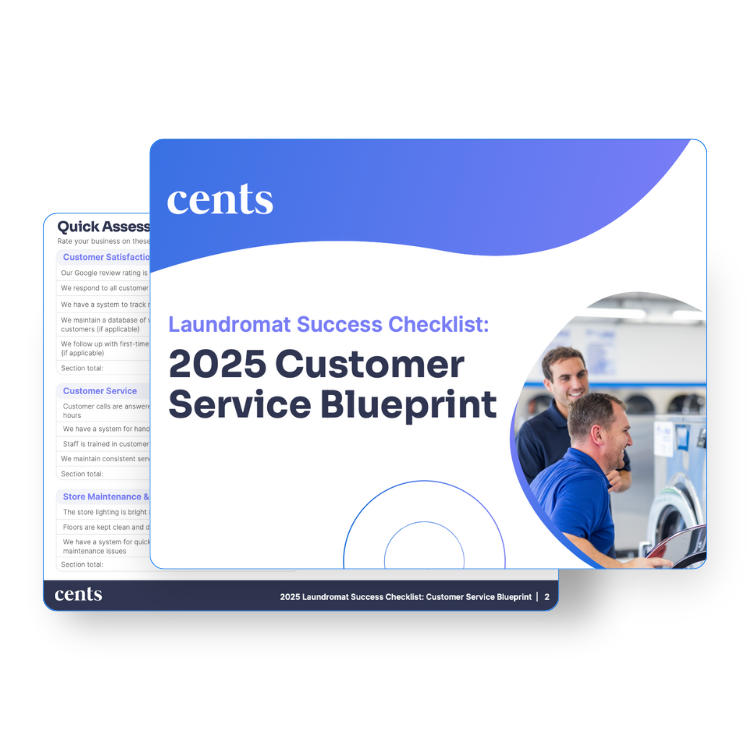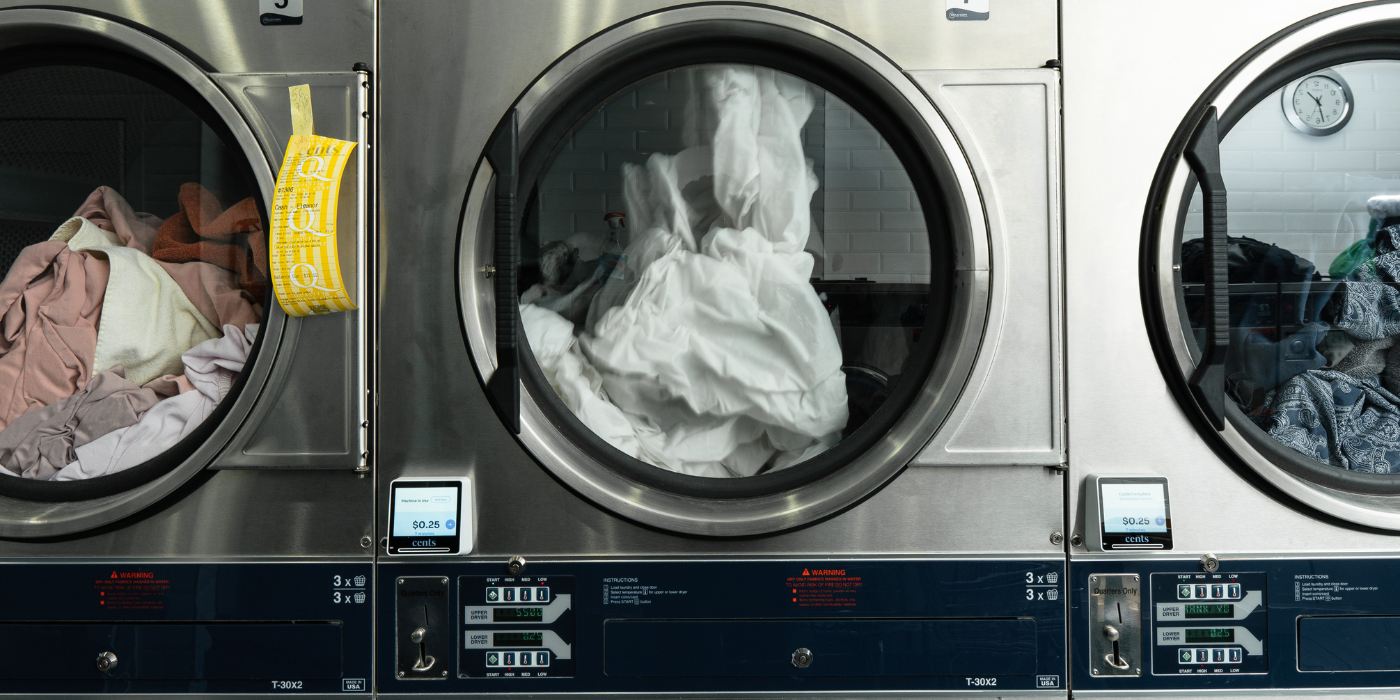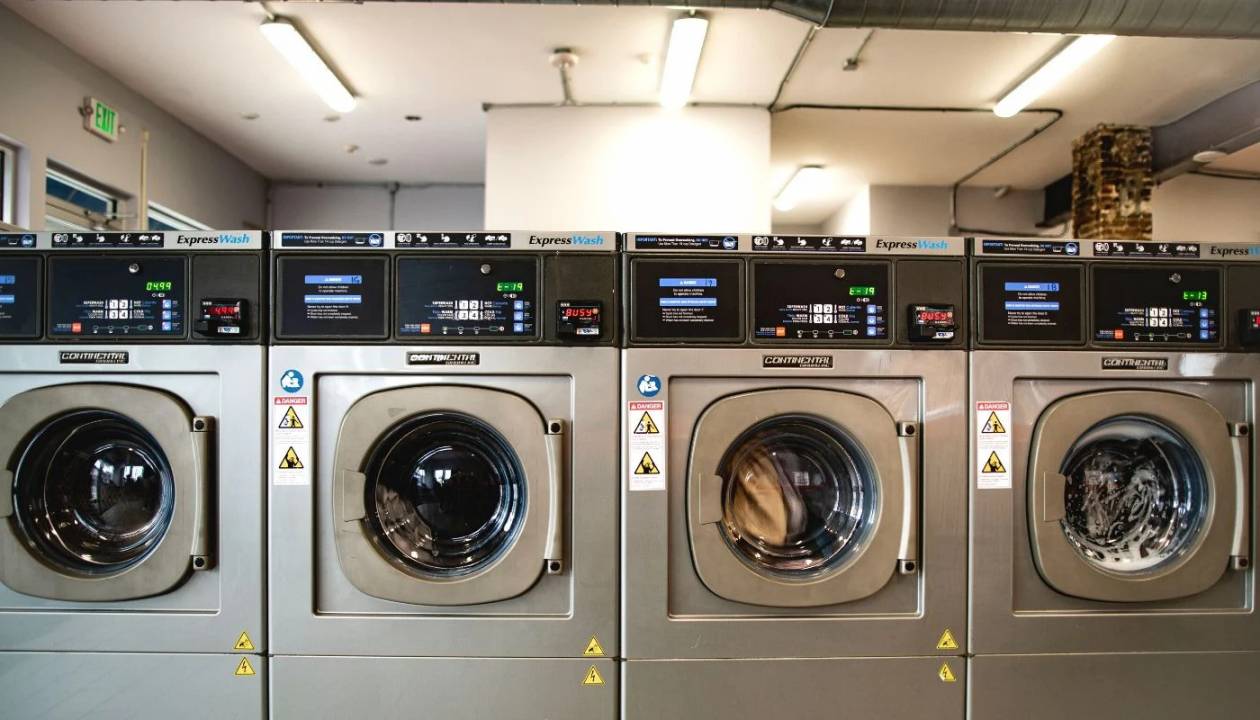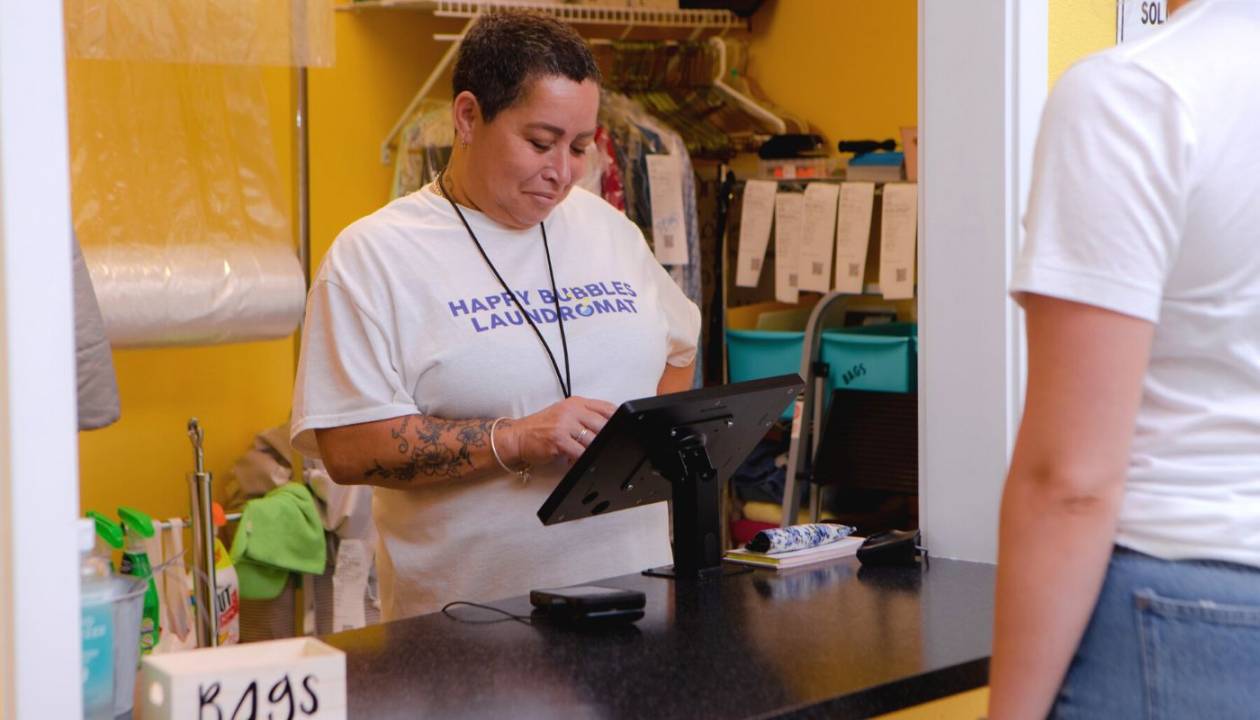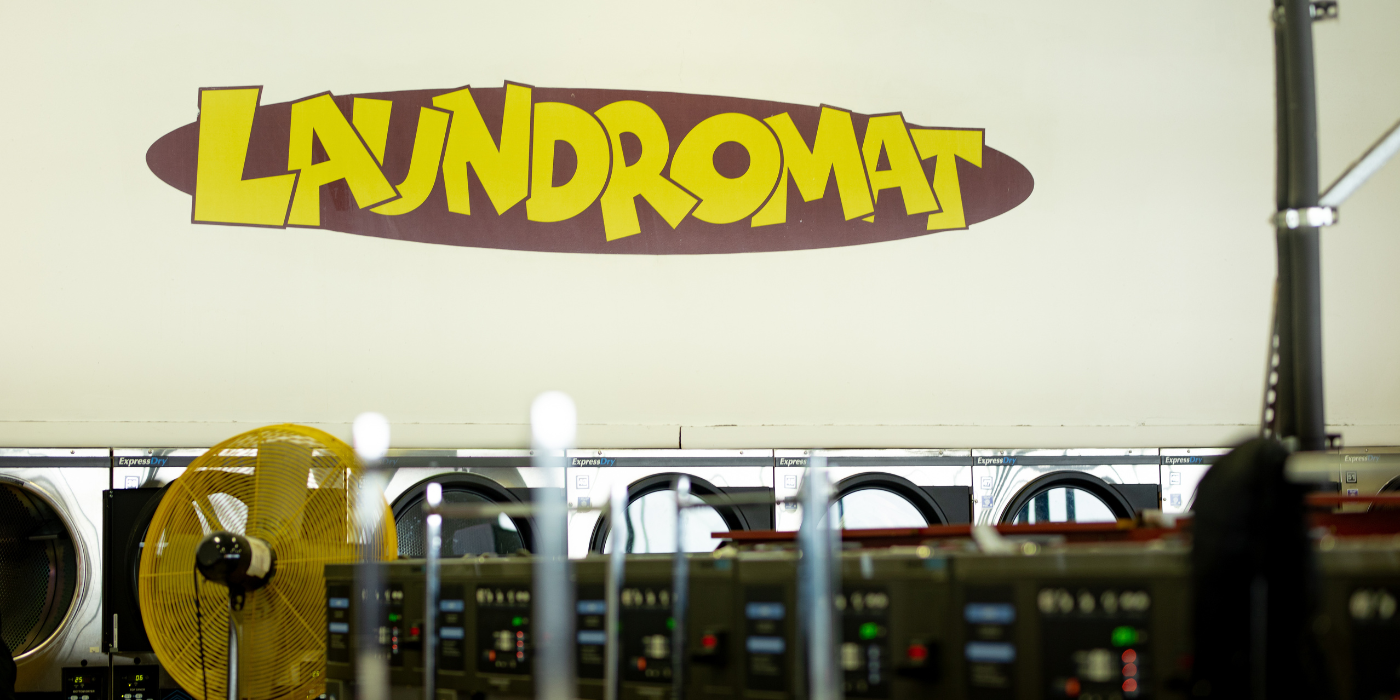Understanding the laundromat business model
The laundromat business model is a tried and true pathway to generating stable income with notable profit margins, turning heads of both new and seasoned laundromat entrepreneurs. Laundromats provide an essential community service, creating a steady cash flow safe from seasonal changes and economic downturns.
Investing in a laundromat can yield impressive returns, with average profit margins ranging from 20-35%. These high returns are largely due to the low labor costs and minimal recurring inventory requirements associated with running a laundromat, setting it apart from other small business ventures. In fact, a laundromat can generate gross income between $150,000 to $600,000 annually, on average.
The scalability of a laundromat further enhances its appeal. Laundromat investors have the opportunity to expand operations by incorporating additional services such as wash-and-fold, dry cleaning, and pickup and delivery services, attracting a broader customer base and increasing revenue potential.
Thorough laundromat market analysis is essential to laundromat success. This foundational step involves analyzing local demographics, evaluating consumer behavior, assessing existing laundromats, and staying informed about industry trends. Such in-depth analysis provides valuable insights into the demand for laundromat services in the local community and helps identify potential challenges and opportunities in the market.
Another important consideration is choosing the right location. Foot traffic, visibility, competition, parking, zoning regulations, utility costs, and the condition of the building play a significant role in attracting customers and ensuring profitability.
7 factors to consider in a laundromat deal
1. Location
Thoroughly research the demographic landscape of the area your laundromat will serve. This includes identifying and analyzing the specific characteristics and needs of potential customers within the vicinity. Ideal laundromat customers can vary widely, encompassing blue-collar workers, lower-middle-class families residing in apartments, a substantial number of college students, and local businesses. Recognizing these demographics enables you to tailor your laundromat's services and design to meet their unique requirements effectively.
Make sure your laundromat is strategically positioned to stand out by offering additional services or convenience that nearby competitors don’t. This differentiation is vital in attracting and retaining customers, safeguarding and maximizing your profit margins.
2. Machines and equipment
Conduct a thorough assessment of the washers and dryers within the business to determine their condition and current technology. If you find the equipment to be outdated or not in optimal working order, anticipate the necessity for repairs or replacements—factors that should influence the negotiation of your purchase price. Plus, ensuring a balanced assortment of washers and dryers is crucial for meeting customer needs and maximizing operational efficiency. Opting for the right mix of laundry equipment can significantly enhance your return on investment (ROI), driving both customer satisfaction and profitability.
3. Store condition
When inspecting the machines and store equipment, inspect the store itself. Make sure the building is in great shape and make note of any areas that need attention. Ask yourself:
-
Are the floors in good condition?
-
Do the walls need a fresh coat of paint?
-
Are the fixtures falling apart?
-
Do the folding tables need to be fixed?
4. Lease terms
When evaluating the lease for a commercial property, it's important to take a good look at the details. This scrutiny should extend to the duration of the lease, the monthly rental rates, and any specific clauses or provisions that could impact your business operations. You'll want to ascertain that the lease duration offers stability without locking you into an unfavorable long-term commitment. Equally important is to assess the rental amount to confirm it's competitive and commensurate with market rates, ensuring you're securing the best value for your investment.
Other details include maintenance responsibilities, options for lease renewal, sublease policies, and any restrictions on property use. These aspects are vital for safeguarding your business's future flexibility and operational efficiency. By negotiating a lease that’s cost-effective and conducive to your business's growth and adaptability, you position your venture for sustained success in its physical location.
5. Utilities
It's important to understand the cost of utilities for the laundromat like the water, sewer, trash, and electric bills. You'll want to make sure you have the most accurate and up-to-date information on what the current utility costs are.
It's also important to know the average amounts of these bills so you can factor that into your overall costs. If the store is in an area with high utility costs, it could eat into your profits and make the deal less attractive.
6. Vending price
Vend pricing, or the cost per load of laundry, is a critical component of your laundromat's profitability. You should conduct a comprehensive analysis of your own vend rates alongside those of local competitors to be sure your pricing strategy is both competitive and profitable. Adjusting vend prices requires careful consideration of various factors, like operational costs, market demand, and the pricing landscape of nearby laundromats. A well-calibrated pricing model not only protects your bottom line but also positions your laundromat as a preferred choice for customers seeking value and quality in their laundry services.
7.Value add opportunities
Once you’ve done all of your preliminary due diligence, you can now focus on any areas of opportunity you envision for the store. There are many ways to add value to a laundromat and that’ll set you apart from the other stores in your area. Some common value-add opportunities include:
-
Offering additional services such as pickup and delivery or wash and fold.
-
Adding a café or seating area for customers to relax in while they wait.
-
Installing coin-operated games, vending machines, etc.
-
Adding a loyalty program to encourage customers to keep coming back.
-
Installing TVs and using Atmosphere TV for customer convenience (Laundromat Pro Perk)
By adding value to the store, you can attract new customers and keep existing ones coming back, which can lead to increased profits!
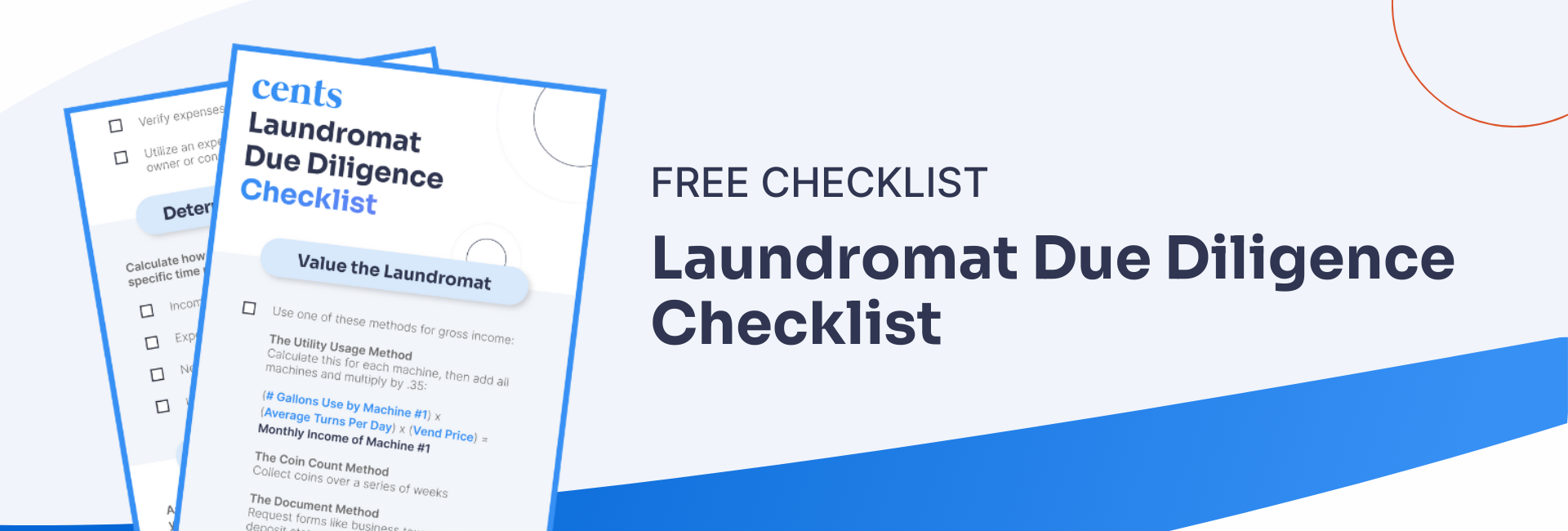
When you conduct the proper laundromat due diligence, you understand what you are buying and what it’s worth. To help you in your purchasing process, we’ve created a complete Laundromat Due Diligence Checklist.
Analyzing financials: The key to a profitable laundromat investment
Analyzing the financials is crucial when considering a laundromat investment. This analysis includes understanding the initial investment costs, operating expenses, and revenue projections to ensure a profitable venture.
-
Initial investment costs: The upfront cost of owning a laundromat includes the purchase price or down payment if financing is involved, along with any renovation or equipment upgrade costs.
-
Operating expenses: Ongoing costs include utilities (water, electricity, gas), maintenance, repairs, insurance, and potentially payroll if staff is employed. It's essential to scrutinize past financial records to gauge these expenses accurately. Operating efficiently by managing these expenses can significantly impact profitability.
-
Revenue projections: Revenue sources include self-service laundry, wash-and-fold services, vending machines, and potentially dry cleaning services. Projected earnings should be based on current market rates, the local demand for services, and competition analysis. It's advised to create detailed financial projections to anticipate future income.
Crafting a solid laundromat investment strategy
Building an investment strategy for laundromat ownership is crucial for maximizing returns and minimizing risks. The process requires meticulous planning, detailed analysis, and strategic negotiations. Here are the key strategies and tips for navigating the laundromat investment landscape successfully.
Strategies for negotiating the purchase of a laundromat
Negotiating the purchase of a laundromat requires preparation and understanding of the market. Begin by thoroughly researching laundromats for sale and evaluating each based on location, condition, and financial performance. When you find a potential laundromat, approach the negotiation with a clear understanding of its value and how it aligns with your investment goals. Be ready to discuss terms and have flexibility, but also set clear boundaries for what you're willing to accept. Building a rapport with the seller can also facilitate a smoother negotiation process, leading to more favorable terms.
Tips for minimizing risks and maximizing returns
-
Diversify investment: Consider pooling resources with other investors to spread out the risk. Platforms exist that allow for collective investment in a laundromat, reducing the financial burden on any single investor.
-
Maximize profit margins: Implement strategies to enhance profitability, such as offering additional services (wash-and-fold, pickup and delivery) and ensuring the use of efficient commercial laundromat equipment. Building strong relationships with suppliers can also reduce costs and ensure a reliable supply of laundry essentials.
-
Utilize modern equipment: Investing in modern, energy-efficient laundry equipment can lower operational costs and attract more customers, in turn boosting revenue.
-
Employ strategic marketing: Adopt effective marketing strategies to increase foot traffic and customer loyalty. Consider leveraging social media and local advertising to raise awareness of your laundromat.
It can be hard to know how much revenue your laundromat business model stands to generate. That’s why we created the Laundromat ROI Calculator. This tool is designed to provide a comprehensive overview of potential returns on investment, taking into account initial costs, operating expenses, and projected revenue. By inputting specific data related to your potential investment, the calculator offers valuable insights into profitability, helping you to refine your investment strategy and make data-driven decisions.
Find the right laundromat deal
When looking for profitable laundromat tips, it's important to analyze all aspects of the business and make sure that it is a good fit for your needs. You will want to inspect the machines and store equipment, look at the lease terms, analyze the vending price, and identify any value-add opportunities. If you can see areas where you can improve the store and add value, then it may be a good deal for you!
Ensure you're making a wise investment by downloading our Laundromat Due Diligence Checklist—get your checklist here and start analyzing laundromat deals like a pro to maximize your profits.
.png)

-3.png)

